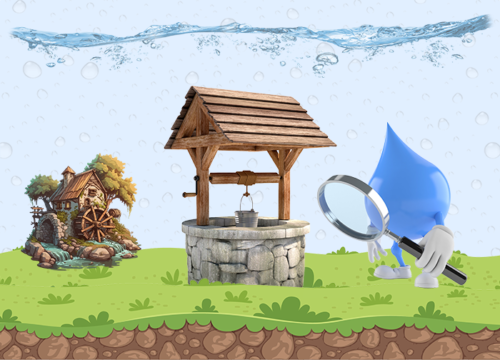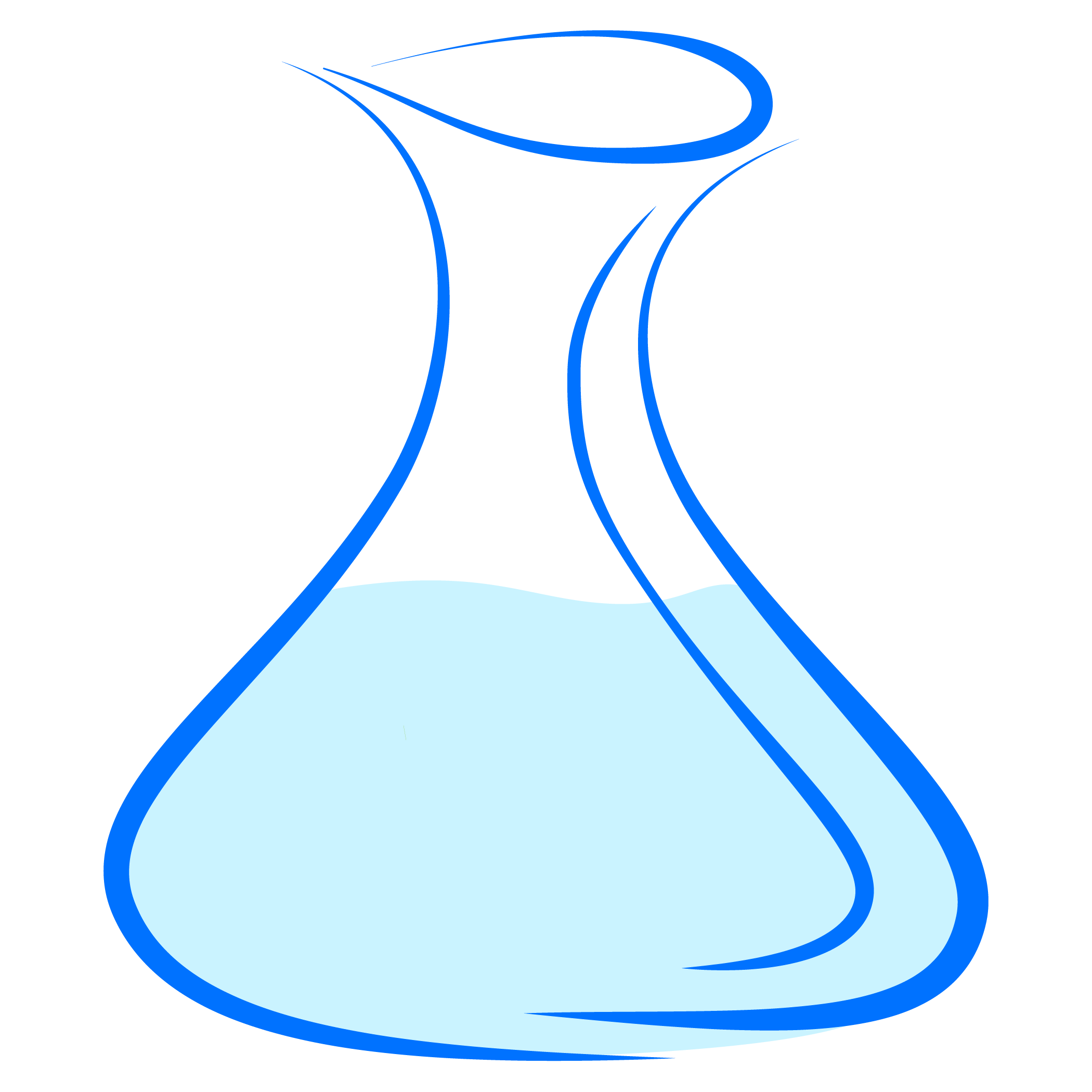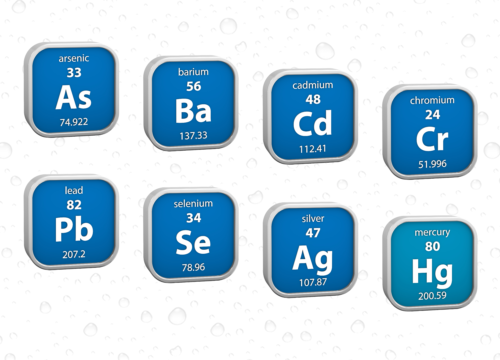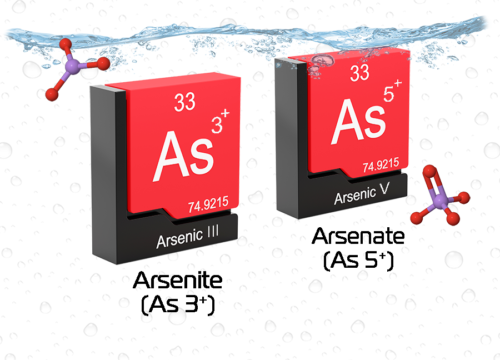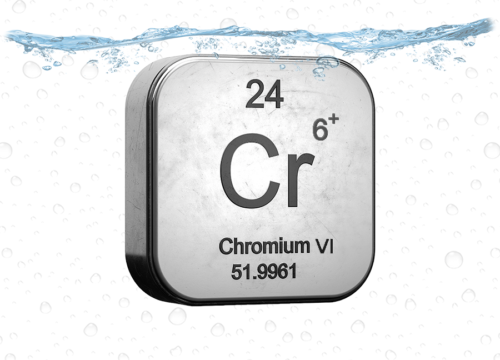What Is Reverse Osmosis (RO)
In a solution of solutes and water, hydraulic pressure forces water across the semipermeable membrane. The result increases solute concentration on one side of the membrane, while adding purified water to the other side. Because solvent moves against the concentration gradient, energy (pressure) is required.
What Reverse Osmosis Removes (and Doesn’t Remove)
Reverse osmosis greatly purifies water, but it does not remove all compounds besides water.
Here is a list of common contaminants reverse osmosis does remove:
- Insoluble metal compounds
- Some ions, such as nitrates, nitrites, and sulfates
- Some soluble metal ions, including sodium, lead, chromium, calcium, copper, magnesium, and manganese
- Arsenic
- Radioactive fall-out particles
- Some bacteria, fungi, algae, protozoa, and viruses
- Most oils
- Most drugs and hormones
*Note that sodium is a small ion, so RO systems make leak some sodium through the membrane.
On the other hand, reverse osmosis, on its own, does not remove the following substances:
- Alcohol
- Most organic compounds (VOCs, pesticides, herbicides, etc.)
- Dissolved gases, including radon, methane, or carbon dioxide
- Chlorine
- Chloramine and other chlorine by-products
- Fluoride
- A few microorganisms, including some bacteria and viruses, especially those that grow on the membrane
However, reverse osmosis filters often include an activated charcoal filter, which removes many organic contaminants, chlorine, and fluoride. Some systems include an ultraviolet light that kills any microorganisms that make it through the RO membrane. Another disinfection process is ozonation, which also breaks apart some undesirable chemicals.
So, you’ll read conflicting reports on what reverse osmosis does and does not remove because it depends on other system components. Combining RO with other methods leaves water clean of pretty much everything besides dissolved gases and a few trace contaminants.
Entry originally posted at: https://sciencenotes.org/osmosis-vs-diffusion-definition-and-examples/
What Is Reverse Osmosis?

Reverse osmosis or RO is a process that purifies water by pressing it through a semi-permeable membrane.
Reverse osmosis or RO is a water purification process that presses water through a semi-permeable membrane. Particles, molecules, and ions that are larger than water molecules remain on one side of the barrier, while nearly pure water exits across the membrane. Here is a look at how reverse osmosis works, its advantages and disadvantages, and its uses.
How Reverse Osmosis Works
As its name suggests, reverse osmosis is the opposite of normal osmosis. In osmosis, water moves across a semipermeable membrane, but from higher to lower solute concentration. It’s like diffusion, except with a membrane, and it is thermodynamically favorable.
Reverse osmosis, on the other hand, requires pressure that forces water across the membrane. The pressure overcomes the osmotic pressure opposing the water molecule movement. The pores in the membrane are semi-permeable, meaning they are large enough that water molecules slip through, but too small to allow larger particles.
How Reverse Osmosis Differs From Filtration
At a glance, you may think reverse osmosis is just a special kind of mechanical filtration. However, there are differences.
- Filtration has pore sizes that are 0.01 micrometers or larger. In contrast, reverse osmosis is either nonporous or else has pores only about 0.001 micrometers in diameter.
- Filtration strains materials solely based on particle size. Theoretically, all of the solvent passes through a filter, without any dependence on the concentration of solutes or pressure. Size, solubility, and diffusivity determine what passes through a reverse osmosis membrane. There is always some water left on the unfiltered side of the membrane.
What Reverse Osmosis Removes (and Doesn’t Remove)
Reverse osmosis greatly purifies water, but it does not remove all compounds besides water.
Here is a list of common contaminants reverse osmosis does remove:
- Insoluble metal compounds
- Some ions, such as nitrates, nitrites, and sulfates
- Some soluble metal ions, including sodium, lead, chromium, calcium, copper, magnesium, and manganese
- Arsenic
- Radioactive fall-out particles
- Some bacteria, fungi, algae, protozoa, and viruses
- Most oils
- Most drugs and hormones
*Note that sodium is a small ion, so RO systems make leak some sodium through the membrane.
On the other hand, reverse osmosis, on its own, does not remove the following substances:
- Alcohol
- Most organic compounds (VOCs, pesticides, herbicides, etc.)
- Dissolved gases, including radon, methane, or carbon dioxide
- Chlorine
- Chloramine and other chlorine by-products
- Fluoride
- A few microorganisms, including some bacteria and viruses, especially those that grow on the membrane
However, reverse osmosis filters often include an activated charcoal filter, which removes many organic contaminants, chlorine, and fluoride. Some systems include an ultraviolet light that kills any microorganisms that make it through the RO membrane. Another disinfection process is ozonation, which also breaks apart some undesirable chemicals.
So, you’ll read conflicting reports on what reverse osmosis does and does not remove because it depends on other system components. Combining RO with other methods leaves water clean of pretty much everything besides dissolved gases and a few trace contaminants.
Advantages and Disadvantages
Reverse osmosis offers both advantages and disadvantages for water purification.
The main advantage is that the water from a good system is very, very pure. It is safe for drinking, release into the environment, and use in commercial processes.
- There is the expense of buying the system and the energy cost of running it.
- Because of low back-pressure, most home systems are very inefficient. Anywhere from 5% to 55% of the water exits the filter. The remainder gets lost as waste.
- For drinking water, reverse osmosis requires additional treatment methods, such as charcoal filtration and UV lights.
- RO removes minerals from water that aid human health. In commercial drinking water operations, companies often add some of these minerals back. Otherwise, drinking only demineralized water carries some health risks.
- The membrane requires cleaning or replacement.
- Not all of the input water gets recovered.
Reverse Osmosis Uses
The largest use of reverse osmosis is for drinking water purification and desalination. Commercial systems include several steps, so they remove more contaminants than reverse osmosis on its own. Home systems assume the source water is already potable, so they don’t always remove additional contaminants.
Another common use is waste water purification. This water removes effluents, freeing the water for a return into a system, release into the environment, or further purification for drinking.
In the food industry, reverse osmosis concentrates juices and syrups with the use of heat. The dairy industry applies this method for concentrating milk and making whey powder. Reverse osmosis also produces low-alcohol beer.
Industries use RO as a means of removing minerals for water so it won’t form deposits on machinery. For example, RO water protects electrodes in hydrogen production.
RO water finds use when making artificial sea water for aquariums. It is also a good water choice for fresh water aquarists because it is very soft water.
Window cleaning is easier using reverse osmosis water than tap water. It does not leave deposits or spots.
References
- Crittenden, John; Trussell, Rhodes; Hand, David; Howe, Kerry; Tchobanoglous, George (2005). Water Treatment Principles and Design (2nd ed.). New Jersey: John Wiley and Sons. ISBN 0-471-11018-3.
- Knorr, Erik Voigt, Henry Jaeger, Dietrich (2012). “Reverse Osmosis”. Securing Safe Water Supplies : Comparison of Applicable Technologies. Oxford: Academic Press. ISBN 978-0124058866.
- Kozisek, Frantisek. Health risks from drinking demineralised water. National Institute of Public Health, Czech Republic.
- Warsinger, David M.; Tow, Emily W.; Nayar, Kishor G.; Maswadeh, Laith A.; Lienhard V, John H. (2016). “Energy efficiency of batch and semi-batch (CCRO) reverse osmosis desalination”. Water Research. 106: 272–282. doi:10.1016/j.watres.2016.09.029
- Weber, Walter J. (1972). Physicochemical Processes for Water Quality Control. New York: John Wiley & Sons. ISBN 978-0-471-92435-7.
Osmosis vs Diffusion – Definition and Examples
Osmosis and diffusion are two important types of mass transport. Here are the definitions of osmosis and diffusion, examples of each process, and a look at the differences between them.
Osmosis and Diffusion Definitions
Osmosis – Osmosis is the movement of solvent particles (usually water) across a semipermeable membrane from a dilute solution to a concentrated solution. The solvent dilutes the concentrated solution until concentration is equalized on both sides of the membrane.
Diffusion – Diffusion is the movement of solvent and solute particles from an area of higher concentration to lower concentration. At equilibrium, the net effect is a homogeneous concentration throughout the medium.
Osmosis and Diffusion Examples
Osmosis Examples: Soaking gummy bear candies is an easy osmosis demonstration. The gelatin in the candies acts as a semipermeable membrane. A good biology example is the swelling of red blood cells when they are placed in fresh water and their shrinkage (crenation) when they are placed in salt water. Plant root hairs uptaking water is another example of osmosis.
Diffusion Examples: A good example of diffusion is the way perfume fills an entire room. Another example is the movement of small molecules and ions across the cell membrane. Dropping food coloring into water is an example of diffusion. Other processes occur, but diffusion is the main transport method.
Comparing Similarities
There are similarities between osmosis and diffusion:
- Both osmosis and diffusion are passive transport processes. In other words, they are spontaneous and there is no energy required for them to occur.
- Both processes equalize the concentration of the solution.
Osmosis vs Diffusion
There are key differences between osmosis and diffusion:
- Osmosis only occurs across a semipermeable membrane, while diffusion can occur in any mixture (including across a semipermeable membrane).
- In biology, osmosis only refers to the movement of water. In chemistry, solvents other than water may move. Diffusion has the same meaning in both disciplines.
- In osmosis, only the solvent is free to move across the membrane. In diffusion, both solvent and solute particles are free to move.
Key Points

- Both osmosis and diffusion are passive transport processes that equalize concentration. In other words, no energy needs to be supplied to the system for them to occur.
- In diffusion, particles move from higher concentration to lower concentration until equilibrium is reached.
- In osmosis, there is a semipermeable membrane that only allows the solvent particles to move. Solvent (usually water) moves until equilibrium is reached.
- Don’t be confused by concentration in osmosis. Remember, the only way to equalize concentration on both sides of the barrier is for water to move. The solvent molecules move from lower solvent concentration to higher solvent concentration, but they move from higher solute concentration to lower solute concentration. The concentration of the solution is what’s important.
- Osmosis may be considered a special case of diffusion involving a semipermeable membrane where which only the solvent moves.
| Diffusion | Osmosis |
|---|---|
| Solvent and solute move from an area of highest energy or concentration to a region of lowest energy or concentration. | Only water or another solvent moves from a region of high energy or concentration to a region of lower energy or concentration. |
| Diffusion can occur in any medium, whether it is liquid, solid, or gas. | Osmosis occurs only in a liquid medium. |
| Diffusion does not require a semipermeable membrane. | Osmosis requires a semipermeable membrane. |
| The concentration of diffused molecules equalize to fill the available space. | The concentration of the solvent does not become equal on both sides of the membrane. |
| Hydrostatic pressure and turgor pressure do not normally apply to diffusion. | Hydrostatic pressure and turgor pressure oppose osmosis. |
| Diffusion does not depend on solute potential, pressure potential, or water potential. | Osmosis depends on solute potential. |
| Diffusion mainly depends on the presence of other particles. | Osmosis mainly depends on the number of solute particles dissolved in the solvent. |
| Diffusion is a passive process. | Osmosis is a passive process. |
| The movement in diffusion is to equalize concentration (energy) throughout the system. | The movement in osmosis seeks to equalize solvent concentration, although it does not achieve this. |
Other Types of Transport Processes
There are different types of diffusion. The type of diffusion contrasted with osmosis is simple diffusion. Active diffusion and facilitated transport are other mass transport processes.
- Simple diffusion – Particles move from higher to lower concentration until concentration is homogeneous.
- Active transport – Solute particles move from lower to higher concentration. In biology, enzymes (proteins) carry solutes across a membrane and energy (ATP) is required.
- Facilitated transport – Solutes move from higher to lower concentration across a membrane, assisted by transmembrane proteins. This is a way for large molecules to cross a semipermeable membrane. It is a passive transport process, like simple diffusion.
There are also different types of osmosis, all involving a semipermeable membrane:
- Regular osmosis – Solvent particles move from higher to lower concentration (low to high solute concentration) until equilibrium is reached.
- Reverse osmosis (RO) – In a solution of solutes and water, hydraulic pressure forces water across the semipermeable membrane. The result increases solute concentration on one side of the membrane, while adding purified water to the other side. Because solvent moves against the concentration gradient, energy (pressure) is required.
- Forward osmosis (FO) – Osmotic pressure draws water across a semipermeable membrane, separating it from solutes. Both reverse osmosis and forward osmosis require energy (pressure), but reverses osmosis pushes water, while forward osmosis draws or “pulls” it. Also, reverse osmosis can generate fresh drinking water, while the product of forward osmosis contains solute particles. For example, sugar and salt can be used to draw water from impure water, producing an emergency drink.
Diffusion vs Effusion
Effusion is a type of mass transport process seen in gases. Diffusion allows gas particles to freely disperse through their container. Effusion is transport of gas molecules through pores that are smaller than their average mean free path (distance between particle collisions). Effusion occurs more slowly than diffusion. The rate of effusion is inversely proportional to the square root of the mass of the particles, according to Graham’s law.
References
- Glater, J. (1998). “The early history of reverse osmosis membrane development.” Desalination. 117 (1–3): 297–309. doi:10.1016/S0011-9164(98)00122-2
- Haynie, Donald T. (2001). Biological Thermodynamics. Cambridge: Cambridge University Press. pp. 130–136. ISBN 978-0-521-79549-4.
- Kramer, Eric; David Myers (2012). “Five popular misconceptions of osmosis.” American Journal of Physics. 80 (694): 694–699. doi:10.1119/1.4722325
- Landau, L.D.; Lifshitz, E.M. (1980). Statistical Physics (3rd ed). Vol. 5. Butterworth-Heinemann. ISBN 978-0-7506-3372-7.
- Muir, D. C. F. (1966). “Bulk flow and diffusion in the airways of the lung.” British Journal of Diseases of the Chest. 60 (4): 169–176. doi:10.1016/S0007-0971(66)80044-X


